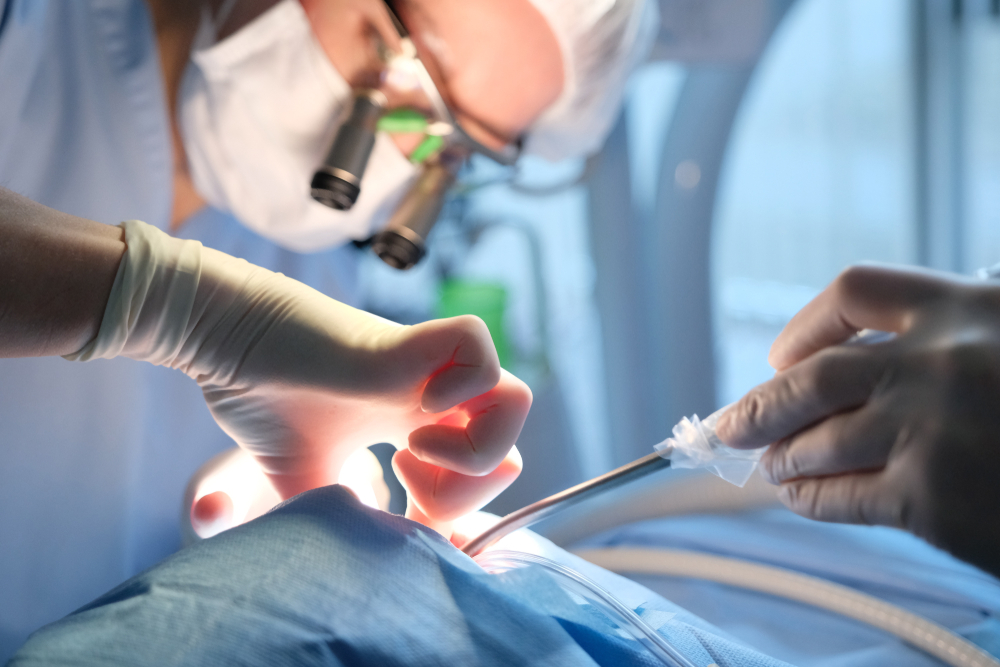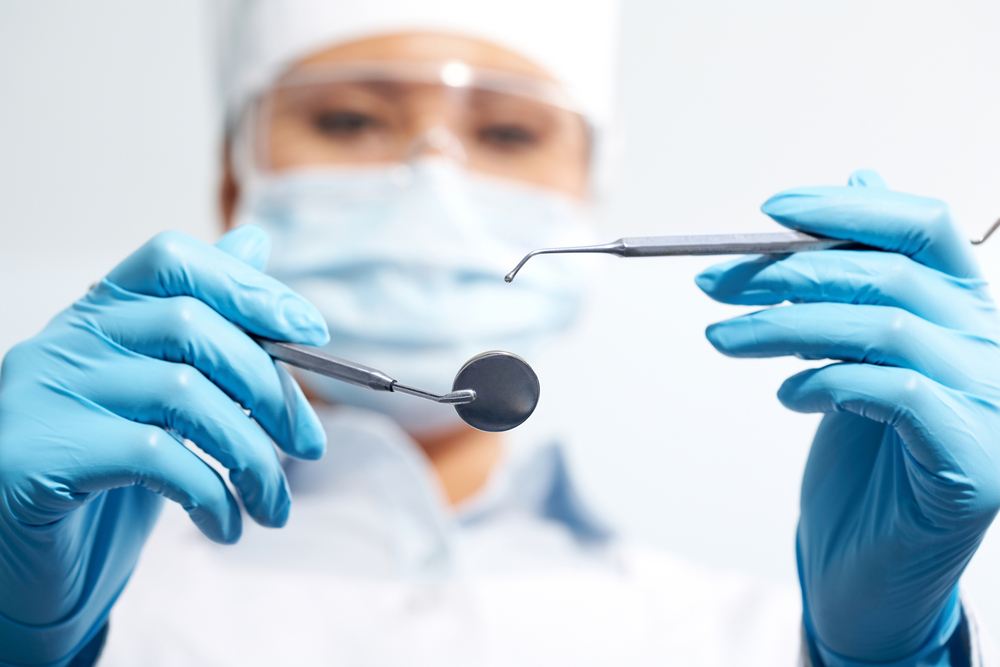
While you’ve probably heard of dental implants, not everyone is as familiar with bone grafting. But, for many patients, getting a bone graft is part of the dental implant process. Once the bone grafting material is in place, it takes time for it to heal and for new bone to form in order to support the implant. So, how long after a bone graft can you get a dental implant? The experts at Naperville Dental Specialists have answers.
In this post, we’ll discuss:
- What is a dental bone graft?
- Is a bone graft always part of the dental implant process?
- What happens during the bone grafting procedure?
- How long does a bone graft take to heal and what is the recovery like?
- How long after a bone graft can an implant be placed?
- What is the dental implant process timing from start to finish?
- How long does a bone graft last without an implant?
What is a Dental Bone Graft?
When you’re missing teeth, the underlying jawbone isn’t stimulated anymore, which signals to the body that it’s not needed. Over time, the body reabsorbs the bone. This jaw bone loss can not only impact your facial appearance and the health of your remaining teeth, it can also make it difficult to place dental implants. This is because implants need adequate quality and quantity of bone to support them.
The good news is, a dental bone graft is an excellent solution. Our Naperville implant dentist, Dr. Anthony LaVacca, places bone graft material into the empty socket after a tooth is extracted or in areas of the mouth where bone is deficient. The grafting material acts almost like a scaffold and new bone cells are created around it. Eventually the bone regenerates, replacing the graft materials and giving you bone where you need it.
The type of bone graft procedure and material will depend on your unique needs. However, most commonly, Dr. LaVacca and his team use allografts. These grafts are made of donated bone materials that have been refined and sterilized. Allografts are biocompatible, high quality and don’t require another surgical procedure to take bone from somewhere else in your own body.
Is a Bone Graft Always Part of the Dental Implant Process?
Not always. At Naperville Dental Specialists, Dr. LaVacca offers advances like All-on-4® dental implants. If you’re a candidate, the technique allows him to replace all of the teeth in one or both arches using just four, strategically placed implants without bone grafting. Additionally, some patients naturally have enough bone to support a dental implant or are able to replace a missing tooth before any bone loss occurs. When that’s the case, bone grafting isn’t necessary.
That said, it is extremely common for getting a bone graft to be part of the dental implant process. If you’re having a tooth extracted, we can usually perform a bone graft immediately after the extraction. This way, you’ll be ready for a dental implant. Even if you’re not sure about dental implants, a bone graft after an extraction might still be recommended in case you do decide to get an implant in the future.
What Happens During the Bone Grafting Procedure?
There are several different types of bone graft procedures, including socket preservation, a sinus lift and ridge augmentation. Though the specifics will be slightly different depending on your needs, it’s actually a quick, minor procedure.
We use local anesthetic (we also offer sedation if you’re anxious) to numb the area, so you won’t feel any discomfort. Dr. LaVacca then places the bone grafting material into the empty tooth socket or makes an incision and places it in the section of the jaw that needs augmenting.
If you lost an upper molar or premolar and you’re having a sinus lift performed, Dr. LaVacca makes a small opening above the missing tooth. He then lifts the sinus membrane up and packs bone grafting material beneath it. This ensures there will be enough room to place the dental implant without damaging the sinus pocket.
Depending on the type of graft, Dr. LaVacca may place a covering, or membrane, over it and secure it with dissolvable stitches.
How Long Does a Bone Graft Take to Heal and What is Recovery Like?
Pain is usually pretty mild after a bone graft. Taking an over-the-counter pain reliever can help manage discomfort. Swelling is normal, especially if you also had a tooth extraction. Hold a cold compress in the area of the procedure for 10 minutes at a time for the first day after surgery. Try to sleep with your head elevated and avoid strenuous physical activity until your dentist gives you the go-ahead.
You’ll want to stick with liquids and soft foods in the days right after the procedure. Even after you resume your normal diet, don’t eat hard, crunchy or sharp foods for a few weeks. Be sure to follow the detailed post-op instructions we give you, which will include how to keep the area clean and any complications to keep an eye out for.
As for how long a bone graft takes to heal, you will probably feel completely back to normal within two weeks. But, the bone will still need to regenerate, so it takes three to nine months for most patients to fully heal.
How Long After a Bone Graft Can an Implant be Placed?
There are some cases where we can do a sinus lift and dental implant placement in a single procedure. However, many times, such as with socket preservation, a bone graft needs to mature before it can support a dental implant.
In order to determine how long after your bone graft you can get a dental implant, Dr. LaVacca will have you come in for a post-op visit so he can monitor your healing. The timing can vary depending on your oral and overall health, as well as other factors. Generally, we can place an implant three to four months after a bone graft, though it might be a bit sooner or later.
What is the Dental Implant Process Timeline From Start to Finish?
The dental implant process timeline varies according to the procedures you need. Dr. LaVacca is an American board-certified prosthodontist and stays on the leading-edge of his field. He’s able to offer revolutionary treatment options, including All-on-4 and Teeth-in-a-Day®.
If you’re a candidate for a procedure like Teeth-in-a-Day, you’ll get your permanent replacement teeth on the same day as your dental implant surgery. If you didn’t require an extraction and bone graft beforehand, you won’t have any waiting period. A few weeks after your consultation, you’ll get a brand new smile.
If you opt for traditional dental implant surgery, the dental implant process timeline will run about three to six months. Dr. LaVacca will place a titanium or zirconia dental implant into your jawbone. The implant will be allowed to heal for three to six months, during which it will fuse with your jawbone in a process known as osseointegration. After it heals, Dr. LaVacca will attach your permanent replacement tooth.
How long is the dental implant process when bone grafting is involved? It will look something like this:
- Extraction and bone graft
- Three- to four-month healing period
- Dental implant surgery
- Three- to six-month healing period
- Permanent replacement tooth
That means the process can take six months to a year to complete. Whichever option you go with, we often give you a temporary replacement tooth during the healing period.
How Long Does a Bone Graft Last Without an Implant?
Maybe you’re thinking about getting a bone graft or you already got one and you’re still trying to decide if you want a dental implant. If that’s the case, you’re probably wondering, how long does a bone graft last without an implant?
Unfortunately, there isn’t a concrete answer that applies to everyone. In general, we encourage patients to get a dental implant within six to 12 months of the bone graft. This is because the implant puts the same pressure on the bone that your tooth roots did, which maintains the quantity and quality of bone, preventing bone loss.
However, technically, a bone graft can last forever in some patients, though the quantity of bone will change. Over time, if a dental implant isn’t placed, the new bone that formed thanks to your graft will resorb just like your natural bone did. The atrophy will eventually slow, however. It really depends on your unique situation and oral health as to whether you can get a dental implant years down the road without needing another bone graft.
The Bottom Line:
There are cases where bone grafting and dental implant surgery can be done at the same time. For others, Dr. LaVacca offers state-of-the-art tools and techniques like All-on-4, which can help certain patients avoid bone grafting altogether. However, most patients who require a bone graft will need to wait three to four months after the graft to have dental implants placed.
Learn More About Bone Grafting & Dental Implants in Naperville, IL
As a leading prosthodontist, Dr. LaVacca can help you replace missing teeth with dental implants in the safest, most precise and efficient way possible. Using high-tech diagnostics, he’ll determine if you need a bone graft and create a personalized treatment plan and timeline for you. The end result will be a beautiful, functional smile and improved oral health. To learn more about your options, schedule a consultation with our Naperville implant dentist today!

































